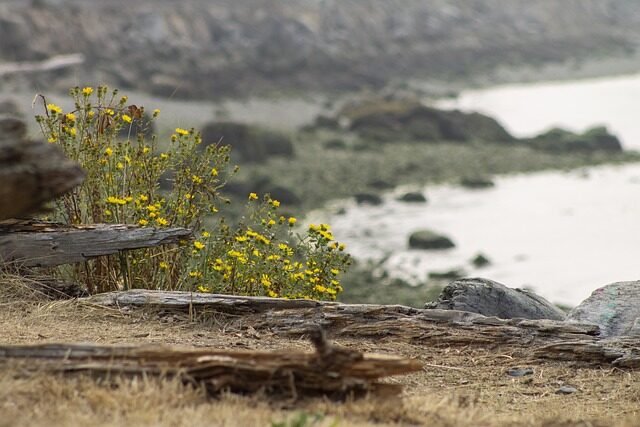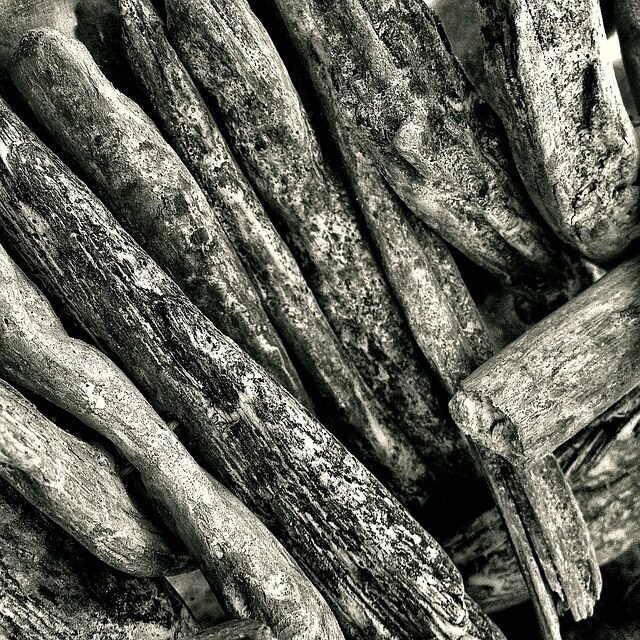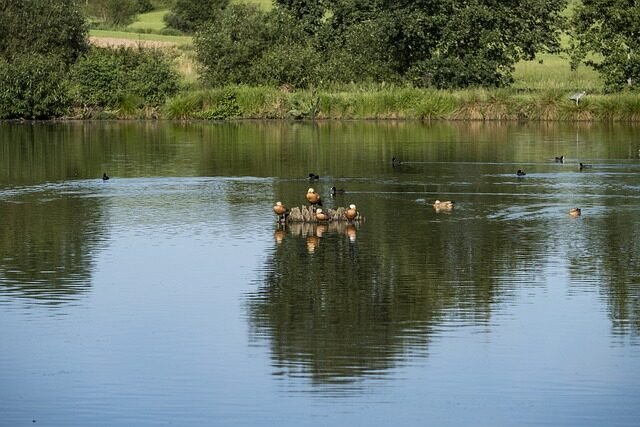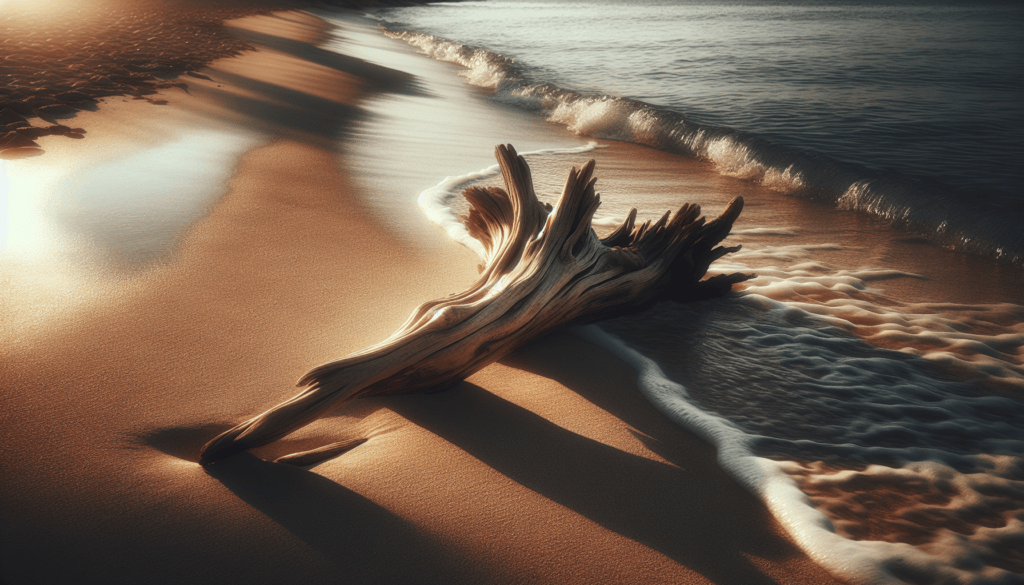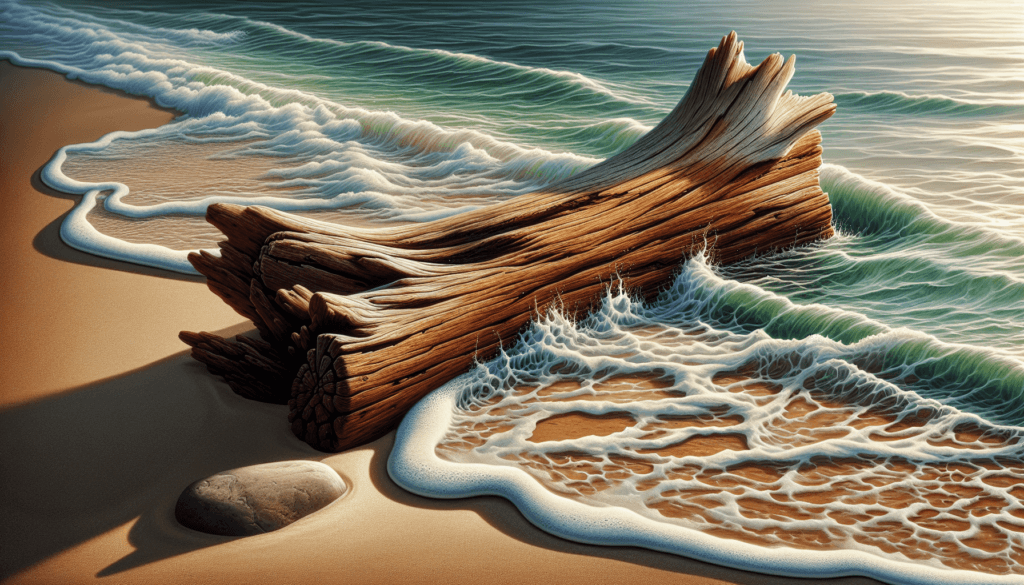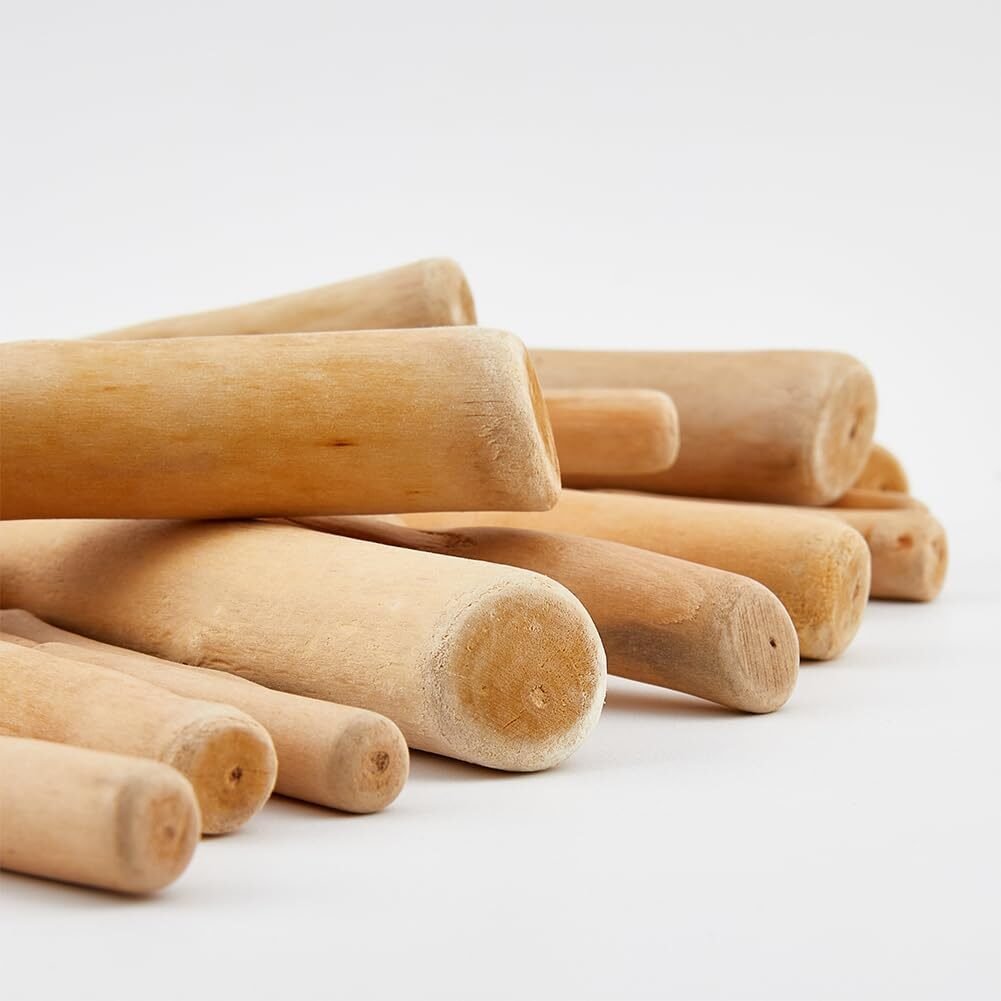In this article, you will discover the simple yet captivating process of creating your very own driftwood. With its weathered charm and unique beauty, driftwood has become a popular choice for home decor and craft projects. By following a few easy steps, you’ll soon find yourself collecting and transforming ordinary wood into stunning pieces of art. So grab your tools and get ready to embark on a creative journey that will add a touch of natural elegance to your space. Let’s dive into the world of driftwood making!
Choosing Driftwood
When it comes to working with driftwood, the first step is finding the perfect pieces to work with. Driftwood comes in various shapes, sizes, and types, each with its own unique characteristics that can enhance your project. Here are some tips on how to choose the right driftwood for your needs.
Identifying the Types of Driftwood
Before you start hunting for driftwood, it’s essential to familiarize yourself with the different types available. Common types of driftwood include driftwood from trees, like pine or cedar, and driftwood from marine sources, such as mangrove or sea grape trees. Each type has its own distinctive appearance and properties, so understanding these differences can help you make an informed decision.
Determining the Size and Shape
Once you’ve identified the type of driftwood you want, consider the size and shape that will best fit your project. A larger piece of driftwood can be a focal point in a room, while smaller pieces can be used for smaller craft projects. Consider the dimensions you need and the purpose of the driftwood to decide on an appropriate size and shape.
Inspecting for Durability
When choosing driftwood, it’s crucial to inspect it for durability. Look for wood that is not overly weathered or fragile, as this may indicate weakness. Pay attention to any signs of rot or insect infestation. Sturdy and intact driftwood will ensure that your projects last longer and withstand the test of time.
Preparing Driftwood
Before you can start working on your driftwood project, you need to prepare the wood properly. This involves cleaning the wood, removing debris and organic matter, and treating it for pests or insects.
Cleaning the Driftwood
Driftwood can accumulate dirt, sand, or algae during its time in the water. Cleaning the driftwood will remove any surface impurities and allow you to see its true color and texture. Begin by gently brushing the wood with a stiff-bristled brush to remove loose debris. Then, rinse the driftwood thoroughly under running water to wash away any remaining dirt or sand.
Removing Debris and Organic Matter
Sometimes, driftwood may have attached shells, barnacles, or other organic matter that can detract from the overall appearance. To remove these elements, carefully scrape them off using a small, blunt tool like a butter knife or plastic spatula. Be cautious not to damage the wood while removing these unwanted additions.
Treating for Pests or Insects
Since driftwood spends a significant amount of time in water, it may harbor pests or insects. To ensure that your driftwood is free of unwanted guests, consider treating it with a wood-safe insecticide or using natural pest control methods. This step is essential to prevent any infestations from spreading to other materials or surfaces in your home.

Preserving Driftwood
Preserving driftwood is crucial to maintain its natural beauty and prolong its lifespan. Applying a wood preservative and sealing the wood will help protect it from decay and ensure its longevity.
Applying Wood Preservative
Wood preservatives, such as wood stabilizers or penetrating oils, can prevent the driftwood from drying out, cracking, or becoming brittle. Before applying any preservative, carefully read and follow the manufacturer’s instructions. Using a brush or sponge, evenly apply the preservative to the entire surface of the driftwood. Allow it to penetrate the wood for the recommended amount of time before proceeding.
Sealing the Driftwood
Sealing the driftwood will further protect it from moisture damage and enhance its appearance. Choose a sealer that is specifically designed for wood, such as polyurethane or clear varnish. Apply the sealer using a brush or sponge, following the manufacturer’s instructions for application and drying times. Multiple coats may be necessary to achieve the desired level of protection and finish.
Drying Driftwood
Properly drying driftwood is essential to prevent warping, cracking, or decay. There are different methods to choose from, depending on how quickly you want the wood to dry and the resources available to you.
Natural Air Drying
One of the simplest and most natural ways to dry driftwood is by allowing it to air dry over time. Choose a well-ventilated area, preferably outdoors, and place the driftwood on a rack or elevated surface to promote airflow. Keep in mind that air drying can take several weeks or even months, depending on the size and moisture content of the wood.
Accelerating Drying with Heat or Sun
For a faster drying process, you can use heat or the sun’s warmth to speed things up. Place the driftwood in a warm and dry location, such as a sunny spot in your yard or near a heat source. Keep in mind that excessive heat can cause the wood to crack or become too brittle, so monitor the drying process closely to prevent damage.
Avoiding Common Mistakes
When drying driftwood, it’s essential to remember a few key points to avoid common mistakes. Firstly, do not rush the drying process by using extreme heat or exposing the wood to direct sunlight for long periods. This can cause the wood to warp or lose its original color. Secondly, ensure proper ventilation to prevent the growth of mold or mildew. Finally, regularly inspect the driftwood during the drying process to catch any potential issues early on.
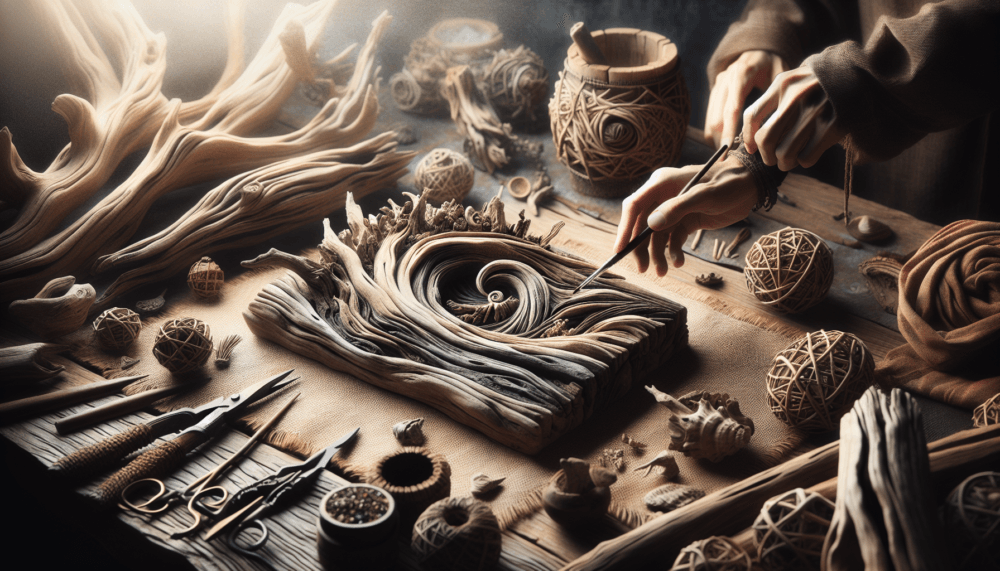
Sanding Driftwood
Sanding driftwood is an important step in achieving a smooth, polished, or distressed finish. It helps remove rough edges, splinters, or any imperfections on the surface of the wood.
Choosing the Right Sandpaper Grit
When sanding driftwood, selecting the appropriate sandpaper grit is crucial. Finer grits, such as 120 to 220, are ideal for smoothing the surface and preparing it for painting or staining. For creating texture or distressing effects, coarser grits, like 80 to 100, can be used. Consider the desired outcome of your project and choose the sandpaper grit accordingly.
Smoothing the Surface
Start by using the coarser grit sandpaper to smooth out any rough spots on the driftwood. Move the sandpaper in the direction of the wood grain, applying even pressure. As you progress, gradually switch to finer grit sandpaper to achieve a smoother finish. Remember to wipe away any dust or debris with a clean cloth between sanding stages.
Creating Texture or Distressing
If you’re looking to create texture or distressing on the surface of the driftwood, you can use various techniques. Scratching the wood with a wire brush, chisel, or even nails can create interesting patterns and add depth to your piece. Experiment with different tools and methods to achieve the desired effects while maintaining the integrity of the wood.
Enhancing Driftwood
Enhancing driftwood allows you to bring out its natural beauty or transform it according to your artistic vision. Bleaching, staining, painting, or adding decorative elements are some common techniques used to enhance driftwood.
Bleaching for a More Weathered Look
Bleaching driftwood can give it a more weathered, sun-bleached appearance. Start by thoroughly cleaning and drying the wood. Then, following the manufacturer’s instructions, apply a wood bleach solution using a brush or sponge. Allow the bleach to penetrate the wood for the recommended amount of time before rinsing it off. Remember to wear protective gloves and work in a well-ventilated area when using bleach.
Staining or Painting the Driftwood
Staining or painting driftwood allows you to add color and customize its appearance. Before applying any stain or paint, ensure the wood is clean and dry. Test the stain or paint on a small, inconspicuous area of the driftwood to ensure it achieves the desired color or effect. Apply multiple coats if necessary, allowing each layer to dry properly before adding the next.
Adding Decorative Elements
To further enhance your driftwood piece, consider adding decorative elements such as seashells, beads, or small ornaments. Use a strong adhesive, specifically designed for wood, to attach these elements to the driftwood. Be creative and let your imagination guide you in adding these finishing touches to your project.
Creating Driftwood Art
Now that you have prepared and enhanced your driftwood, it’s time to unleash your creativity and transform it into art. Whether you’re a seasoned artist or a beginner, crafting driftwood art can be a rewarding and enjoyable process.
Choosing the Project
When selecting a driftwood art project, consider your skill level, available resources, and personal interests. Driftwood can be used to create a wide range of art pieces such as sculptures, wall hangings, or even functional items like lamps or furniture. Choose a project that inspires you and matches your artistic vision.
Tools and Materials Needed
The tools and materials required for your driftwood art project will depend on the specific project you choose. Common tools may include saws, drills, sandpaper, brushes, and adhesives. Additionally, gather any materials you plan to incorporate into your art, such as paints, stains, seashells, or decorative elements. Be sure to have a clean and organized workspace to ensure a smooth creative process.
Step-by-Step Instructions
To provide detailed step-by-step instructions for every possible driftwood art project would require a separate article altogether. However, there are numerous online resources, tutorials, and books available that can guide you through specific projects with clear instructions and visual aids. Utilize these resources to enhance your skills and bring your artistic ideas to life.
Using Driftwood in Home Decor
The natural beauty of driftwood makes it a versatile and captivating element to incorporate into your home decor. Whether you prefer a rustic, coastal, or contemporary design style, driftwood can add a touch of organic charm and visual interest to any living space.
Indoor Driftwood Decor Ideas
Indoor driftwood decor offers endless possibilities. Consider using driftwood as candle holders, table centerpieces, or wall-mounted art pieces. You can even incorporate smaller pieces into terrariums or create unique bookends. The warm, earthy tones and unique shapes of driftwood are sure to add character and a sense of tranquility to any room.
Outdoor Driftwood Decor Ideas
Outdoor spaces can also benefit from the aesthetic appeal of driftwood. Use larger pieces as garden sculptures, fence accents, or even as part of a natural, driftwood-inspired pergola. Driftwood can also be transformed into functional items such as outdoor seating or a coffee table for your patio. Just make sure to seal and treat the driftwood properly to protect it from the elements.
Incorporating Driftwood into Different Styles
Driftwood can seamlessly blend into various interior design styles. In a rustic or farmhouse setting, driftwood accents can enhance the natural, rugged aesthetic. In a minimalist or contemporary space, driftwood provides an organic contrast and adds visual interest. Whatever your preferred style, there are creative ways to integrate driftwood into your home decor to create a unique and personal ambiance.
Driftwood Craft Ideas
Apart from driftwood art and home decor, there are numerous craft ideas that can showcase the beauty and versatility of this natural material. Here are three popular driftwood craft ideas to get you started.
Driftwood Wind Chimes
Create a soothing and melodic wind chime using pieces of driftwood, shells, or small metal bells. Arrange the driftwood in various lengths, attaching them with sturdy twine or fishing line. Add decorative elements like seashells or charms, and hang your driftwood wind chime in a breezy spot to enjoy its relaxing sounds.
Driftwood Candle Holders
Crafting driftwood candle holders can provide a warm and natural touch to your home decor. Choose a sturdy piece of driftwood with a flat top, and carefully carve out small indentations to hold tealight or pillar candles. Ensure the candles fit securely into the driftwood to avoid any accidents. Place your driftwood candle holders on tabletops, mantels, or even in outdoor spaces for a cozy and inviting atmosphere.
Driftwood Picture Frames
Turn ordinary picture frames into unique pieces of art by embellishing them with driftwood. Apply a wood-safe adhesive along the edges of the frame, and carefully press the driftwood onto the adhesive, covering the frame completely or partially, depending on your desired look. Allow the adhesive to dry thoroughly before inserting your favorite photos or artwork into the frame. These driftwood picture frames will add a touch of natural beauty to any space.
Tips and Considerations
Safety Precautions
When working with driftwood, it’s essential to prioritize safety. Wear protective gloves and goggles when handling driftwood to prevent splinters or injuries. Ensure proper ventilation when using wood preservatives, stains, or paints. Take caution when using tools and sharp objects, and always follow manufacturer instructions for any chemical products you may use.
Sourcing Driftwood Ethically
To protect the environment and promote ethical practices, it’s important to source driftwood responsibly. Avoid taking driftwood from protected natural areas or fragile ecosystems. Instead, look for driftwood that has washed up on beaches or is available from reputable suppliers. Additionally, consider using reclaimed or salvaged driftwood from older structures or logs to minimize environmental impact.
Maintaining Driftwood Art Pieces
To ensure the longevity of your driftwood art pieces, it’s important to maintain them properly. Dust the surface regularly using a soft cloth or brush to remove any dirt or debris. Avoid placing driftwood in direct sunlight for extended periods to prevent fading or warping. Check for signs of wear or damage regularly, and repair any loose pieces or areas with a suitable adhesive. By providing proper care, you can enjoy your driftwood art pieces for years to come.
In conclusion, working with driftwood offers an endless array of creative possibilities. From choosing the right pieces to enhancing their natural beauty and incorporating them into various projects and decor styles, driftwood can add a captivating touch to any space. By following these comprehensive guidelines, you’ll be well-equipped to embark on your driftwood journey and bring the warmth and charm of nature into your home. So go ahead, unleash your creativity, and let driftwood be the centerpiece of your next artistic endeavor!


